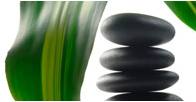The nectar of life…. breast milk…. has been described to me as tasting like “the milk at the bottom of the cereal bowl” by a mother of a 5-month old. Remember how tasty that was as a kid after eating the Captain Crunch or the Cheerios loaded with tablespoons of sugar? Our body needs the sweet stuff- glucose – a major body fuel-in order to create ATP (energy). Excess glucose is converted to fat or glycogen for later use. This fat is a good thing when we are 6 months old and need lots of it for growth and protection but what about when we are 10-20-40-60?
From birth we are given the sweet stuff to soothe, satisfy and nourish. It only makes sense to me that we see a mass craving for the sweet stuff in our adult life. We are growing increasingly busier in our modern society and need lots of soothing and nourishment to handle everyday stresses. Depending upon one’s ability to handle stress and how busy one is I would imagine determines the craving for the sweet stuff.
Finding good quality nourishment seems to be a modern problem. Â Because we are so busy we tend to look for the quick meal. Â Fast food restaurants will often have 4-5 cars waiting in line to get their quick sandwich on their way to the next activity. Â Loaded with fat and sugar it calms the nerves and fills the belly. Â 1,000 calories and a short hour or two later one is left feeling empty and a little haggard. Â More glucose is needed to survive the day because there was only a lot of empty calories in the previous meal consumed. We are left feeling spacey and irritable and begin the journey to heart disease, diabetes and obesity.
Sugar is abundant in our processed foods. Traditionally used as a flavor enhancer it has worked itself into most canned goods. You will know what I mean if you are a label reader or on a restricted diet. It is quite difficult to find processed foods that don’t list sugar-natural or artificial- as an ingredient.  Some natural sugar alternatives that are easier on the body and the environment are: Stevia(Rebiana), Xylitol, Erythritol, Agave Nectar, Brown Rice Syrup, Maple Syrup and Honey.
I am definitely one of the sugar lovers in the world. Â To me sugar equates “love”. Â We always had sweets around when I was a kid. Â Our weekend activities included baking a cake or a triple batch of cookies to munch on over the week. Â Trying to completely eliminate sweets is a hard one for me and I appreciate the challenge of anybody who suffers from diabetes.
Sugar has gotten a bad name in my opinion. Â Sugar is not bad-we need glucose for energy production…but we need to reexamine how we get it in our bodies and how much we put into them. Â Are we getting energy from soda pop and candy bars; or are we getting it from carrots, potatoes, corn, red-meat, legumes, fruit and grains? Â Our culture is so pumped up we seemingly can’t go without it.
Below I have broken down sugar into their simple chemical make-up. Â Monosaccharides being the most easily digested by most people.
Monosaccharides:Â simple sugars, the monomers of carbohydrates; glucose, fructose and galactose
Disaccharides:Â Complex carbohydrates; sucrose(table sugar), lactose (milk sugar) and maltose (grain sugar)
Polysaccharides: glycogen and starch ( potatoes, corn, rice, cassava, wheat and used as thickening agent). Â Salivary amylase or saliva splits starch into oligosaccharides-two to eight linked monosaccharides.
Oligosaccharide=Found in food substances such as onions, Jerusalem artichoke, burdock, chicory, leeks; Â can be taken as a supplement to regulate intestinal flora.
Just for a matter of interest, look at these sugar molecules. Â The one on the right being crystalline sucrose and the one on the left being lactose. Â Very similar in structure only the lactose molecule looks like it is getting squashed! I find this interesting considering the differing texture between dairy and table sugar. Â Very fitting indeed.



